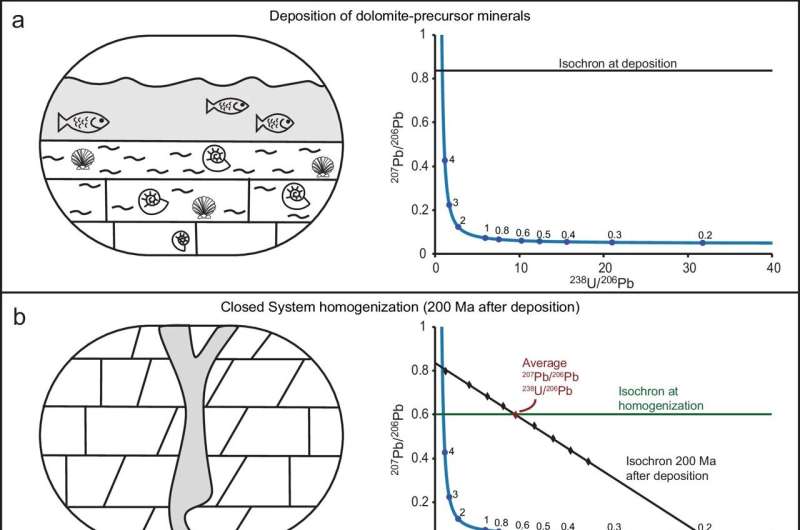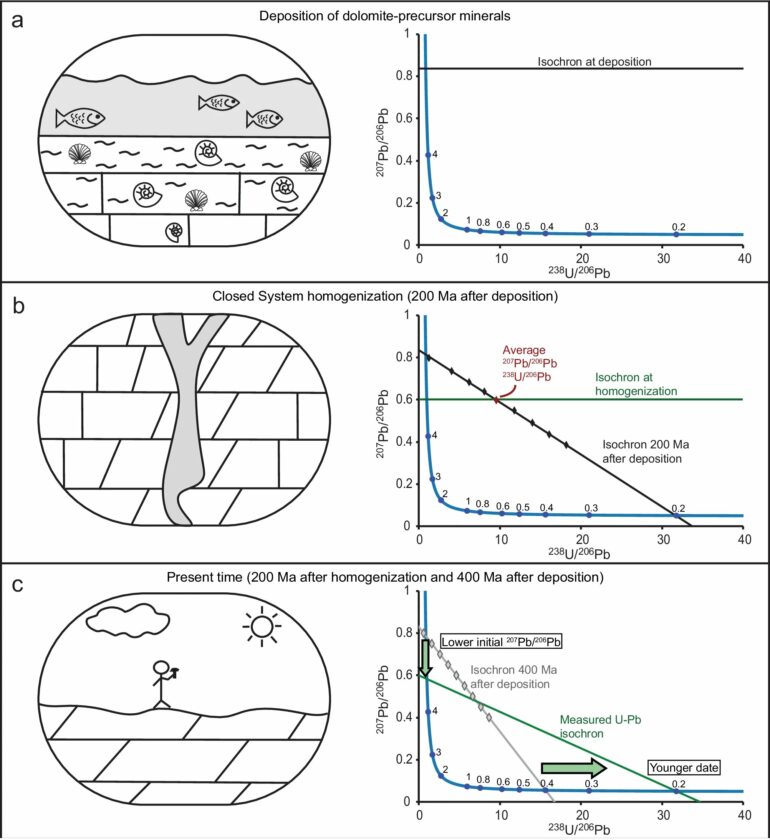Dr. Uri Ryb and Dr. Michal Ben-Israel from the Institute of Earth Sciences at the Hebrew University, along with their collaborators, have made an important discovery in Earth sciences. Their study, published in Nature Communications, introduces a new approach to reconstruct the rise of oxygen in ancient marine environments using U and Pb measurements in dolomite rocks spanning the last 1.2 billion years.
Scientists commonly estimate the oxygen levels in ancient oceans from the composition of ‘redox-sensitive’ elements preserved in ancient sedimentary rocks. However, these compositions can be easily altered in the course of geological history. The team overcame this challenge by developing a new approach that uses dolomite U-Pb dating to detect signals of oxygenation that are resistant to such alteration, giving us an unbiased perspective on marine oxygenation dynamics.
Their record indicates a dramatic increase in the oxygenation of the oceans during the Late Paleozoic era, hundreds of millions of years after the emergence of the first animals. This aligns with other evidence indicating the oxygenation of the ocean at the same time, supports the hypothesis that animals have evolved in oceans that were mostly oxygen-limited, and suggests that changes in ocean oxygen were driven by evolution.

Proposed stages in the evolution of U–Pb system in dolomite precursor carbonate minerals and dolomite, deposited at 400 Ma and altered at 200 Ma, respectively. Changes to the U–Pb system over time are presented using Tera-Wasserburg concordia diagrams. In each plot, the blue line is the concordia curve with blue dots representing time in Ga. a During deposition of carbonate minerals, the initial 207Pb/206Pb ratio is inherited from seawater. b In burial diagenetic environments, long after deposition and following some isotopic decay within the U–Pb system, Pb is redistributed and isotopically homogenized within the sample in a closed system, and dolomite minerals acquire the system-average 207Pb/206Pb ratio. c Following late-stage diagenetic Pb homogenization, isotopic decay within the dolomite proceeds in a closed system to the present, resulting in a U–Pb date younger than the depositional age and an initial 207Pb/206Pb ratio lower than expected initial seawater composition. Gray rhombs and line represent the isochron that would result if there was no alteration. © Nature Communications (2024). DOI: 10.1038/s41467-024-46660-7
According to Uri Ryb, these discoveries not only enhance our understanding of ancient Earth ecosystems but also have implications for the search for extraterrestrial life. “Revealing the dynamics between evolution and oxygen levels in early Earth environments can put observations on the atmospheric composition of exoplanets that now become available through the new generation of space telescopes in context. Specifically, suggesting that low levels of oxygen are sufficient for complex life-forms to thrive.”
More information:
Michal Ben-Israel et al, Late Paleozoic oxygenation of marine environments supported by dolomite U-Pb dating, Nature Communications (2024). DOI: 10.1038/s41467-024-46660-7
Provided by
Hebrew University of Jerusalem
Citation:
Ancient ocean oxygenation timeline revealed (2024, April 4)



